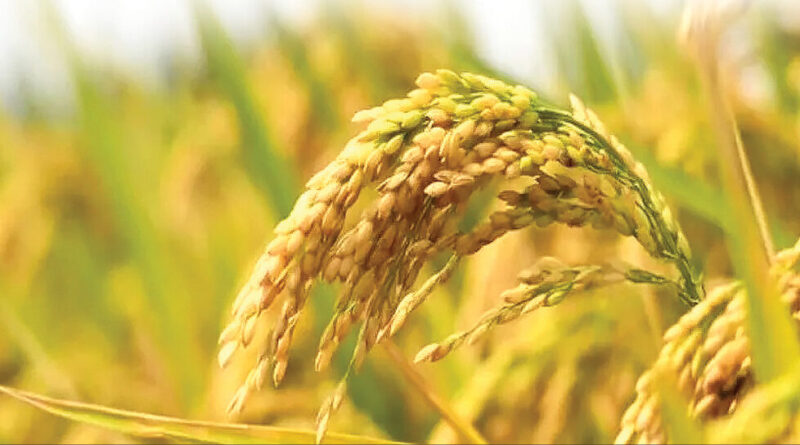Spring paddy areas shrink in western Nepal
By Birendra KC
Lack of irrigation has forced farmers in Lumbini province to abandon the farming of spring paddy, one of the major sources of food grain.
However, most farmers have switched to maize, as the use of superior hybrid seeds has boosted production and earnings compared to spring paddy.
The area growing spring paddy (known as chaite dhan in Nepali) has been on a declining trend nationwide as the government has failed to keep its promises.
The government had planned to expand the acreage of spring paddy by 200,000 hectares to 300,000 hectares in a bid to increase output and make the country self-reliant in food grain.
Nepal has 1.44 million hectares of land suitable for growing paddy. However, spring paddy is grown on only 104,712 hectares.
Spring paddy is planted in 35 districts between mid-March and mid-April. Plantation of this crop, however, is not common because it requires better irrigation. As a result, most cultivators prefer to grow paddy during summer when there is abundant rain.
Despite low acreage, productivity of spring paddy is high, with harvests standing at 4.98 tonnes per hectare, as against 3.97 tonnes for regular summer paddy.
In Lumbini province, spring paddy was transplanted on 3,038 hectares last fiscal year, which has shrunk to 2,677 hectares in the current fiscal year.
Bardiya, one of the top spring paddy-producing districts in Lumbini province, has seen the area shrink to 1,201 hectares from 1,450 hectares in the last fiscal year.
Except for Rolpa and Rukum, spring paddy is cultivated in all districts of Lumbini province.
Spring paddy production areas in Palpa have dwindled to 630 hectares this fiscal year from 700 hectares last year. The area in Gulmi has been reduced to 319 hectares from 340 hectares.
In Arghakhanchi, the area has declined to 170 hectares from 200 hectares last year.
The area in Rupandehi has declined to 54 hectares from 60 hectares in the last fiscal year, and the Kapilvastu spring paddy-producing area has halved to five hectares this fiscal year.
According to the Lumbini Province Agriculture Development Directorate, however, the area under spring paddy in some districts has increased marginally.
It has increased from 40 hectares to 55 hectares in Pyuthan and from 5 hectares to 7 hectares in Nawalparasi.
Similarly, in Dang, the spring paddy area increased marginally to 200 hectares from 198 hectares. In Banke, it has increased to 36 hectares from 35 hectares.
According to government officials, in the 10 districts of Lumbini province, Chaite-2, Chaite-4, Chaite-6, Hardinath-I, and Bindeshwari are some of the paddy varieties planted during the spring.
“The decline in the production area is mainly due to the lack of farm hands in the villages,” said Ram Prasad Pandey, chief of Lumbini Province Agriculture Development Directorate.
“As there is no attraction in farming, it has prompted a massive out-migration. Youths are leaving their hometowns to better jobs abroad in droves.”
He said that in southern Tarai, the cost of production of spring paddy is high as most farmers irrigate their land using electric pumps.
Similarly, experts say that spring paddy is not the choice for consumption, particularly in urban areas, due to its large and thick grain. The demand for fine and long-grain rice varieties, however, has been increasing exponentially. But these varieties are not produced on a commercial scale in Nepal.
Palpa, Gulmi, Arghakhanchi, Pyuthan, Kaligandaki, Badikhola, Ridi Khola, Mathura and other areas were once popular for spring paddy as the terraced fields used to be covered with paddy during the March-May period.
The youth from the hills are either leaving Nepal or to bigger cities in the country. As earnings from other professions are higher compared to agriculture, experts say the future of farming in western Nepal looks bleak.
As spring paddy farming has been declining, the provincial government has been conducting programmes to attract the farmers.
The decline in spring paddy area is mainly due to a lack of sufficient irrigation.
The existing irrigation projects are out of order, and farmers cannot afford the repair and maintenance. Pumping water with electricity costs a lot, farmers say.
Agriculture experts, however, say though spring paddy areas have shrunk, the spring maize farming acreage has been increasing in recent times. “The production of maize is increasing in the Tarai compared to spring paddy,” said Pandey.
Experts say that most farmers grow hybrid maize. The use of superior hybrid seeds has boosted production, and farmers have switched from paddy to maize nowadays, said Pandey.
This article has been republished from The Kathmandu Post.

